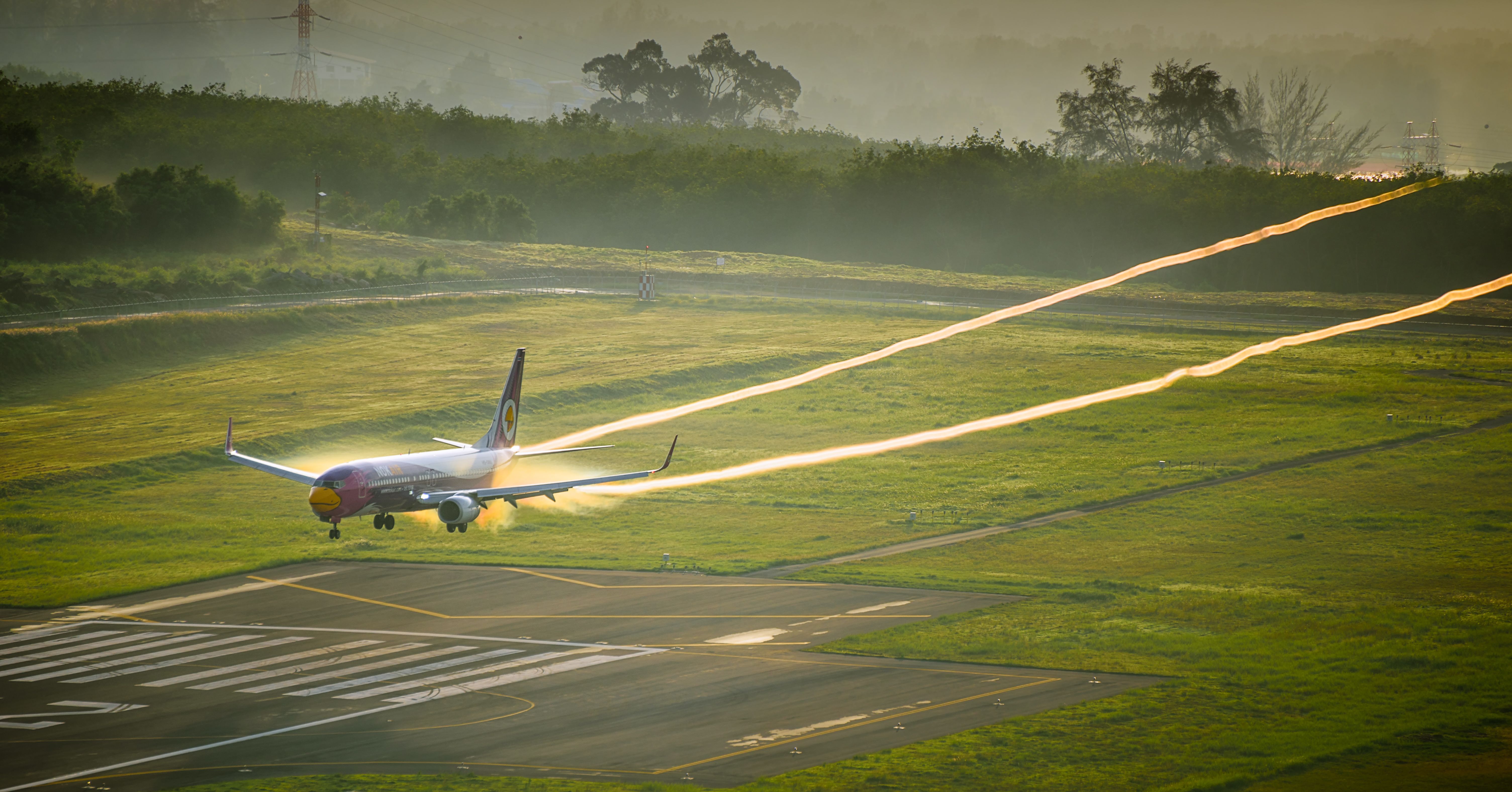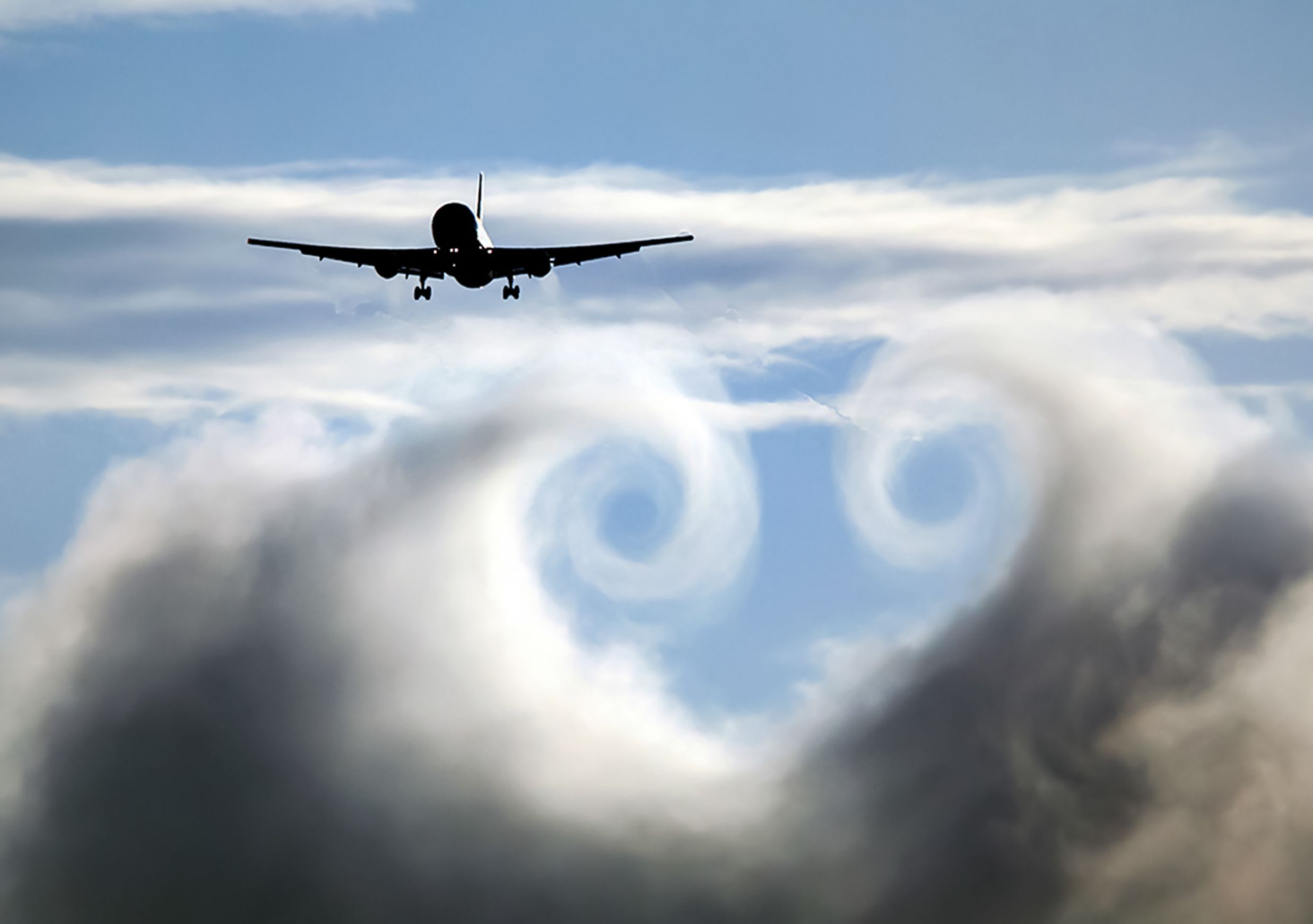One of the many concerns of airline pilots is finding and preserving a smooth ride. Pilots pay close attention to the ride conditions during the climb or en route. One of the more common forms of turbulence is the wake left by the preceding plane. Let's talk about what is done to avoid this kind of turbulence.
Why turbulence prediction matters
Pilots care about avoiding turbulence for a few reasons. The principal concern is ensuring that flight attendants can do their job safely without getting injured. This happens more often than you might think, and flight attendant injuries are a big deal.
Pilots don't want their colleagues to hurt themselves, nor do the pilots want to have to file safety reports and be subject to investigation should a cabin crew member incur an injury. Predicting turbulence and advising flight attendants to remain seated is an understated yet hugely important piece of aeronautical decision-making for the captain and first officer.
A secondary concern and reason for avoiding turbulent areas is providing an enjoyable ride for the passengers. Passenger comfort is usually on this list of core tenets that airlines expect their pilots to be conscious of while flying. Smooth rides help alleviate nervous travelers' anxieties and allow the captain to turn off the seatbelt sign.
Wake turbulence
Pilots review en-route conditions before departure, which include turbulence charts. This, alongside checking with center controllers about ride conditions while in the air, helps inform pilots about the flight conditions. Unlike other forms of turbulence, wake turbulence is predictable. Wake turbulence is caused by areas of high and low pressure coming together at the wingtips of a plane in flight. These vortices stay in place for a few minutes after the plane flies through an air mass, especially if the wind is calm. The severity of wake turbulence is proportional to the size of the aircraft generating it. Wake turbulence has contributed to multiple incidents and accidents, such as American Airlines flight 587 or the in-air loss of control of a Challenger jet following an Airbus A380.
Separation criteria
Due to its predictability, wake turbulence avoidance is provided by air traffic controllers. In the US, the Federal Aviation Administration has strict guidelines for controllers to build separation between planes depending on the leading aircraft's weight. Planes are divided into four categories for wake turbulence separation: Super, heavy, large, and small. Airbus A380s are "super," wide bodies and Boeing 757s are considered "heavy," other single-aisle airliners are "large," and general aviation aircraft are "small."
Pilots of super and heavy category aircraft must state their denomination after their callsign when on the tower frequency and when in terminal radar control areas (departure and arrival control frequencies).
An Airbus A330 flying within 1,000 feet below and behind a Boeing 787 would require four miles of separation (heavy behind a heavy). If the A330 were a Boeing 737, the required distance would increase to five miles (large behind a heavy). Tower controllers have to provide timing when departing aircraft as well.
If a "super" Airbus A380 departs, the controller must provide three minutes or appropriate radar separation before departing another plane. Heavies require two minutes of "in trail spacing." There are a lot of other criteria that ATC adheres to; follow the provided link at the end of the article if you'd like more details.
Want answers to more key questions in aviation? Check out the rest of our guides here.
Wake turbulence can be pernicious if not appropriately predicted. Aviation officials have learned best practices to mitigate the effects of wake turbulence, and pilots and controllers alike are trained to avoid it by providing conservative separation between aircraft.
Source: Federal Aviation Administration



